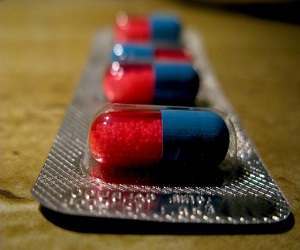
STDs Differ from Yeast Infections
Many people commonly, yet mistakenly assume that a yeast infection is a form of sexually transmitted disease (STDs). While it may be true that yeast infestation may be caused by physical contact, that is not always the case. Everyone has yeast in the body, yet the body is able to control its growth and spread because of the immune system. Yeast infection is also known as candida infection or candidiasis. Yeast problems commonly appear in the mouth as oral thrush where it may develop and spread throughout if not treated properly. Candidiasis can happen if the immune system of the body is not strong enough to combat and control the growth of yeast. This is very common for those who are positive from human immunodeficiency virus (HIV), a condition where the immune system becomes weak over time; in this case the yeast infection can be life threatening.
One type of yeast, Candida albicans, is the main cause of vaginitis. On the other hand trichomonas and gonorrhea, present among STD, can also cause vaginitis. A common type of candida infection is vaginal candidiasis. As mentioned, yeast infestation is fairly common — half of the population of healthy women has yeast in their body especially in the vagina area. In fact, 70 out of 100 women have suffered vaginitis at least once.
The Common Cause of Yeast Infection
Yeast in the body is not considered an infection unless there is an overgrowth that usually appears in the vagina area. Vaginal candidiasis causes inflammation, especially on the surface of the skin, a painful feeling during sexual activities, a burning sensation especially during and after urination, and in some severe cases a vaginal discharge.
For those suffering from urinary tract infection or respiratory tract infection on top of the preexisting yeast infection, the growth of yeast can increase since the usual medication prescribed for these conditions are third generation types which have immunosuppressive effects. Yeast overgrowth also happens to those who have gone through chemotherapy and cortisone medication because the immune systems of these people are affected as well. Pregnant individuals as well as those suffering from diabetes are also vulnerable to yeast infection. Even though yeast infection is not an STD or sexually transmitted disease, men can have skin irritation if they have had any contact with a partner who has yeast infection. Most clinics diagnose the type and severity of a yeast infection through a microscopic examination of the actual samples such as, a skin patch or a cheese like discharge from the infected person.
Treating the Yeast Infection
Yeast is basically caused by uncontrolled growth of fungus in the body, and is commonly treated with antifungal treatments and medications. For mild cases of fungal or yeast infection, first generation treatments, such as low dosage creams and solutions, can be used and applied on the affected part of the body. High dose medications are required for those suffering from severe cases of yeast or fungal infection. This is common to those with a compromised immune system.
 Most of the time doctors recommend treatments with fluconazole. This is the most common form of antifungal treatment in the market, while some doctors feel more confident to recommend suppository drugs in treating such infections, especially for women. Suppository drugs tend to work more quickly when compared to oral medications, since they directly interact with the affected area such as the vagina or anus, while oral medications still need to be processed by the body to produce chemical reactions that promote antifungal treatment.
Most of the time doctors recommend treatments with fluconazole. This is the most common form of antifungal treatment in the market, while some doctors feel more confident to recommend suppository drugs in treating such infections, especially for women. Suppository drugs tend to work more quickly when compared to oral medications, since they directly interact with the affected area such as the vagina or anus, while oral medications still need to be processed by the body to produce chemical reactions that promote antifungal treatment.
If candida colonies do not appear with inflammation, itchiness, and other complications, treatments are not necessary. Keep in mind that the presence of yeast in the body is normal, and in fact is needed by the body as part of its defense against foreign elements that may enter the body’s system. Treatment is only necessary if the number of yeast in the body increases beyond their normal and acceptable range.
TOP 5
YEAST INFECTIONTreatments |
|||||
| YeastClear | Candida Gone | Vagi-Soothe | CandiGONE | Yeastrol | |
|---|---|---|---|---|---|
| 1 | 2 | 3 | 4 | 5 | |
| Price (1 bottle) Price (6 bottles) Best Value |
$49.95 $139.70 |
$39.95 $239.70 |
$39.95 $239.70 |
$34.19 $295.14 |
$29.95 $179.70 |
| Overall Rating | 99.3% | 77% | 72.5% | 63.2% | 61.5% |
| Performance* |





|





|





|





|





|
| Speed of Results* | Extremely Fast | Good | Average | Slow | Slow |
| Quality of Ingredients | Premium | Good | Average | Average | Average |
| Customer Satisfaction Evaluation | 99.4% | 76.5% | 74.2% | 67.1% | 60.5% |
| Safety Evaluation | Safe for Use | Safe for Use | Safe for Use | Safe for Use | Safe for Use |
| Customer Service Rating |





|





|





|





|





|
| Reorder Rate | Highest | Good | Good | Average | Average |
| Return Policy | Risk Free | Unopened | Good | Risk Free | Unopened |
| Success Rate | 99.6% | 78.3% | 74% | 71.1% | 68.5% |

 Subscribe Now
Subscribe Now











